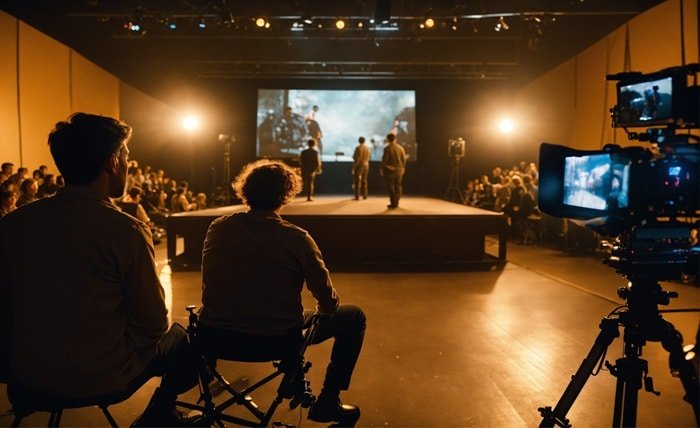How to Legally Use Music in Sports Videos, Promos, and Hype Reels?

The Power of Sound in Elevating Sports Content
Sports are fuelled by energy, from bone-rattling tackles to thundering crowds. This liveliness is
reinforced by music and sound effects, which convert videos into heart-pounding encounters.
However, integrating audio legally requires understanding licensing, selecting fitting tracks, and
avoiding copyright pitfalls. Here’s how creators can craft compelling sports content while
staying compliant.
Music Licensing for Sports Campaigns
Music licensing for sports cannot be negotiated. Gritty rock anthems, pounding computer
rhythms, or enormous orchestral crescendos are all essential for sports material. While these
sounds boost athleticism and desire, improper usage of copyrighted music could result in
takedowns or legal troubles. Instead, opt for royalty-free platforms offering tracks tailored for
sports. Ensure licenses cover intended use (e.g., social media, broadcasts) and provide attribution
if required. Prioritize libraries with "sports-ready" categories to find motivational scores thatmirror the intensity of competition.
Choosing Background Sound Effects That Enhance Realism
background sound effects add texture and immersion. Imagine a sprint emphasized with sneaker
squeaks, or a slam dunk mixed with a swoosh. Crowd cheers, whistle blows, and arena echoes
create authenticity, while subtle ambient noises—like rain during a football match—heighten
drama. When selecting effects, match them to the sport’s environment. For instance, martial arts
highlights benefit from sharp, percussive hits, while marathon recaps might use steady, rhythmic
breathing. Curate a mix of high-energy and nuanced sounds to layer depth without overwhelming
visuals.
Navigating Royalty-Free Libraries for Diverse Audio
Reputable royalty-free platforms host vast libraries of music and background sound effects. Look
for diversity: urban beats for streetball montages, cinematic strings for championship moments,
or traditional instruments for cultural sports events. Many libraries categorize tracks by mood,
tempo, and theme, simplifying searches. Prioritize platforms offering unlimited downloads and
multi-purpose licenses, ensuring content remains usable across campaigns. Verify licensing
terms explicitly permit commercial use, especially for monetized YouTube videos or sponsored
promos.
Avoiding Common Pitfalls in Sound Design
Even legally sourced audio can falter if misused. Overloading a video with too many effects
muddies the message, while mismatched tones—like serene melodies over aggressive
highlights—create dissonance. To avoid mistakes:
● Sync Audio with Visual Timing: Align sound effects to key actions (e.g., a goal scored
with a booming impact).
● Balance Volume Levels: Ensure commentary or dialogue isn’t drowned out by
background tracks.
● Test Across Platforms: Audio that sounds crisp on desktop might distort on mobile.
Seamlessly Integrating Music and Effects: A Step-by-Step Approach
Start by outlining the video’s emotional arc. Intros might build tension with slow, rising
orchestration, while climaxes explode with energetic beats. Layer background sound effects
sparingly, using them to emphasize transitions or key moments. For example, a slow-motion
replay could pair with muted ambient noise before erupting into crowd cheers. Editing tools with
audio ducking features can automatically lower music volume during voiceovers. Always
preview the final cut to ensure harmony between audio and visuals.
Final Thoughts: Crafting Compliant, Captivating Content
Legal audio use doesn’t limit creativity—it enhances professionalism. By leveraging licensed
music for sports and strategic background sound effects, creators produce content that’s both
impactful and lawful. Prioritize quality libraries, tailor sounds to the narrative, and refine mixes
for seamless delivery. Whether for hype reels, tournament promos, or athlete profiles, the right
audio elevates stories, turning ordinary footage into unforgettable experiences.
By blending compliance with creativity, sports content creators can captivate global
audiences—one legally licensed beat at a time.




